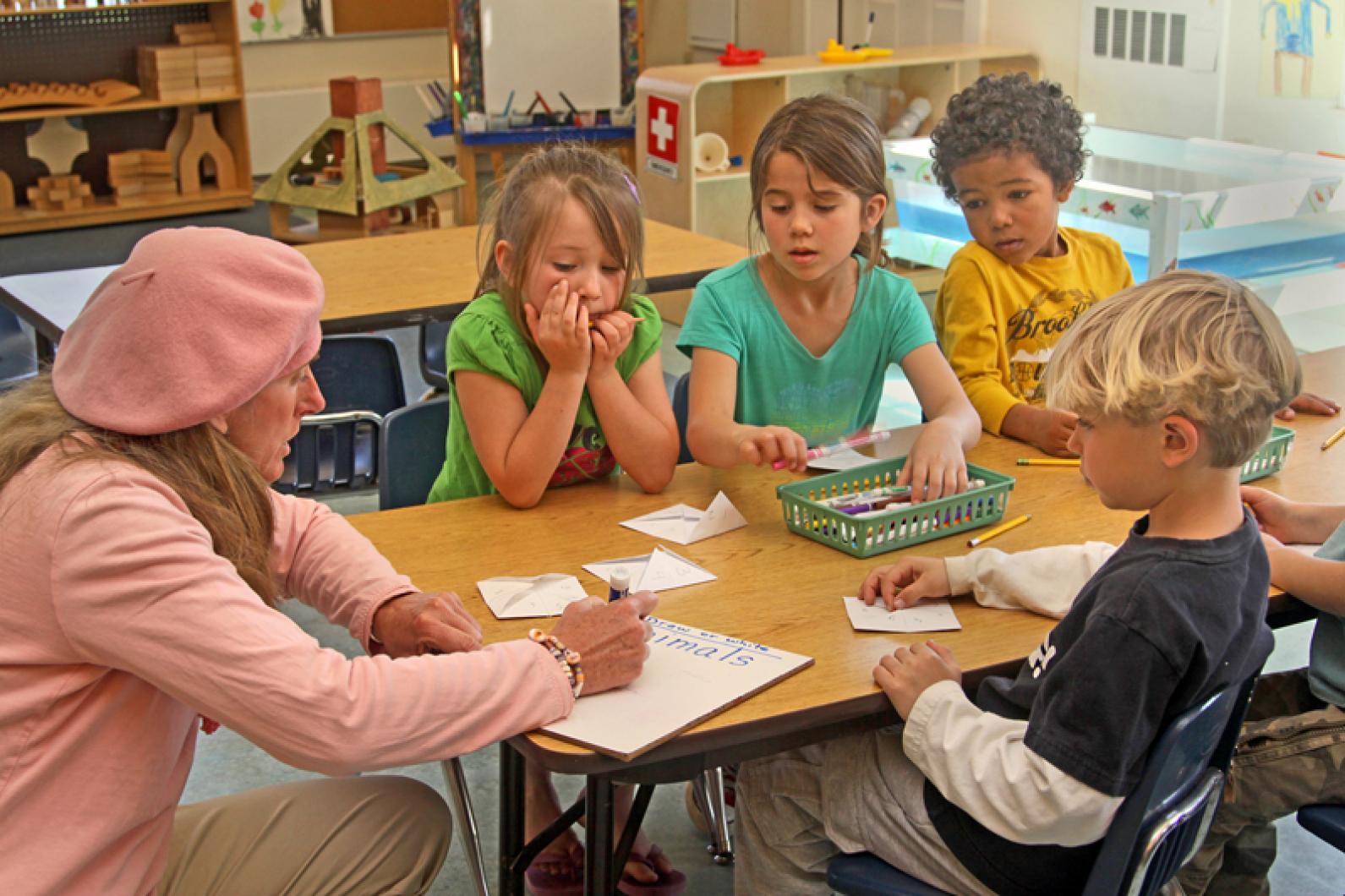“What’s the word for color?”
Kindergarten and first grade teacher Robin Smith dove head first into her class Spanish lesson at the Chilmark School on a recent Wednesday morning last week, despite not knowing the language. Parent and volunteer Anja May stepped in with the translation, sending Ms. Smith back to her task with the kids.
It’s not standard on the Island for the lowest elementary school grades to learn a foreign language, but Ms. Smith herself is far from standard, and her study of child development has taught her that young minds often find it easier to grasp new concepts like languages. Better to start them early, and let interactive play activities supplement the instruction, she reasons.
It’s this kind of dedication to the field of education and early learning that recently earned Ms. Smith a prestigious nomination for Teacher of the Year, an award granted annually by the Massachusetts Department of Education. And though she didn’t make the final cut, she said she was just delighted that her coworkers and community felt that she qualified for the title in the first place.
She received her nomination packet — including a 14-page application document — last fall. The Department of Education was stamped as the return address. “I was like, oh my gosh! Did I lapse one of my certifications?” she laughed as she recalled fearing the worst. But as she tore open the package and read through its contents, her anxiety turned to gratitude. “I felt very prestigious about it,” she said.
Ms. Smith has been teaching for 30 years — 20 of them at the Chilmark School. She’s seen the face of education change over the past three decades, and filling out the detailed application brought her own evolution flooding back to her.
“I spent many hours agonizing over these questions,” she joked, flipping through the application during a brief respite from morning teaching. “It was really a fabulous opportunity to reflect on the trends in education.”
Despite the trends, Ms. Smith’s dedication and philosophy have remained mostly constant. She approaches each child as an individual learner, and considers choice to be the most important ingredient in a well-rounded education.
“Every child can learn,” she said, but she believes giving children choices in what they learn and how they learn it sparks a more personal investment in the material. “They become lifelong learners if they are given the choice,” she said.
Her techniques are evident in her colorful classroom, decorated floor to ceiling with vibrant art projects, educational posters and task charts. The room is divided into what she calls learning centers, which promote hands-on learning activities that center around a guiding theme. Right now, the subject is farming. In an alcove against a back wall, there is a station with worksheets relating to mathematics and vocabulary, and a chart for each student to mark as they complete a series of assignments. This is where choice comes in. Students are expected to do the work, but allowed to choose their pace; they may start with their favorites or get the tougher stuff out of the way first. And because each assignment is disguised as an activity or game, the children are eager to dive in.
Ms. Smith, always there if they need her, also touts the importance of giving the students freedom.
“We guide their play,” she said of herself and her fellow teacher for 20 years, Eleanor Neubert. “I believe that the teacher should truly be the facilitator, and the children should lead.”
Ms. Smith and Ms. Neubert have an easy camaraderie that seems only attainable after years of working side by side. “We’re like an old married couple. We finish each other’s sentences,” said Ms. Smith. It’s a kind of relationship easily fostered in an environment like the Chilmark School, which operates under a strong sense of cooperation and consideration. And that’s another one of the things that makes her job such a pleasure, Ms. Smith said. “It’s a true sense of community and family here,” she said.
Multi-age classrooms largely eliminate feelings of personal failing among students, who span many levels of ability and understanding within the classroom setting. “It eliminates the pressure on the kids,” Ms. Smith said. Older children are quick to lend a hand to younger ones, and vice versa. “Every one of us is a teacher,” said Ms. Smith.
She doesn’t take it lightly that after all this time, her job just doesn’t feel much like work at the end of the day. “I’m blessed every single day to come to work, after 30 years of teaching,” she said.




Comments
Comment policy »